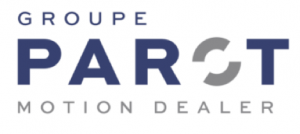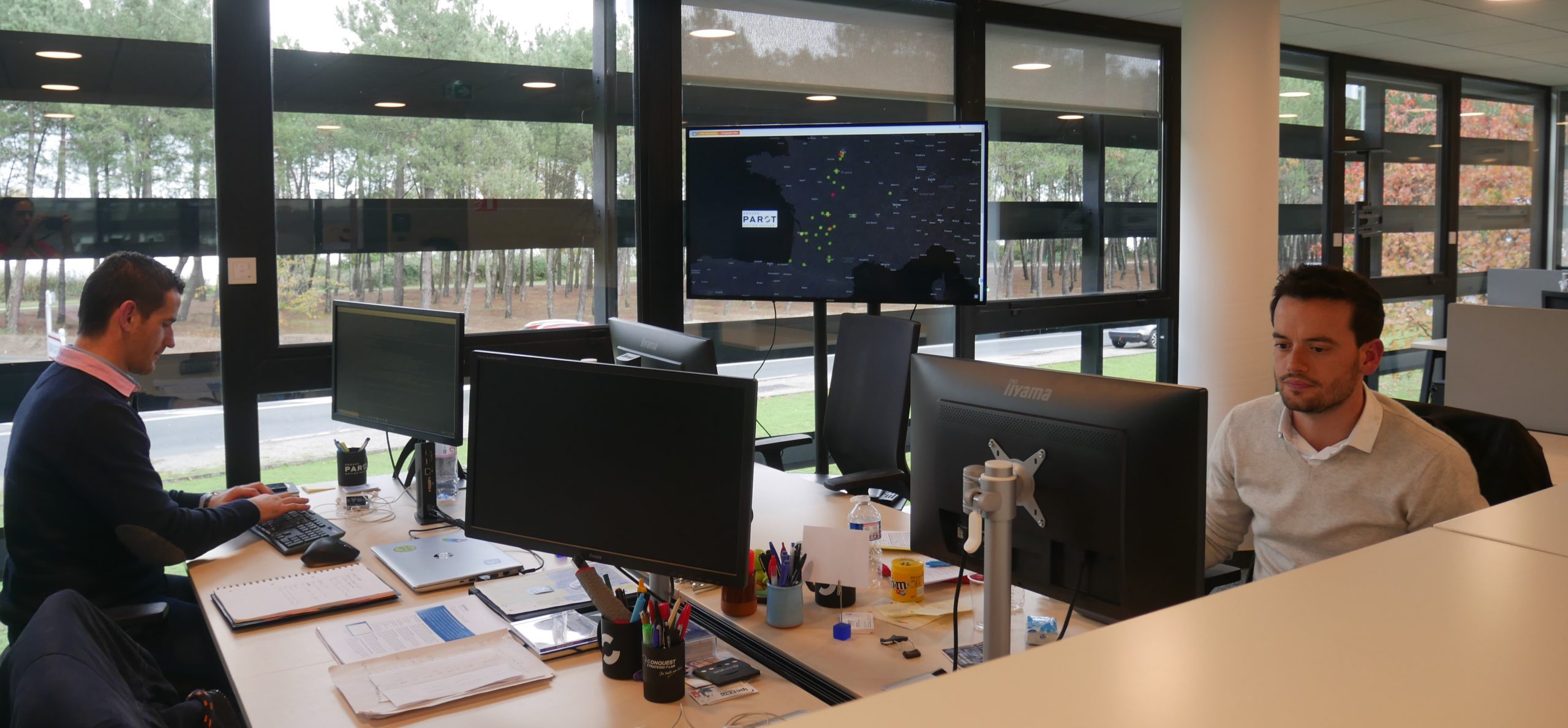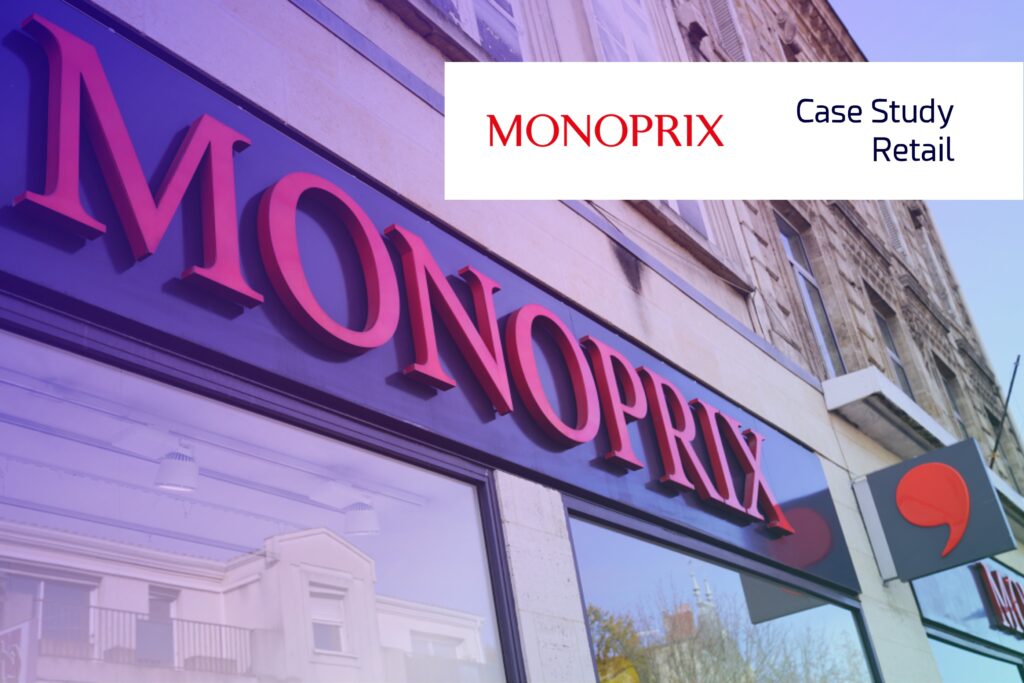Groupe Parot is a distributor of consumer and commercial vehicles, offering 15 brands including Ford, BMW, Mini, Mazda, Mitsubishi, Fiat, Alfa Romeo and Jeep. The company has been in business for over 40 years.

In 2016, Groupe Parot became the first publicly listed automotive distributor on the Euronext stock exchange (ALPAR). Since then, the company has pursued its growth and launched multiple digital transformation initiatives, introducing Zanzicar.fr, its own digital platform for the sale of used vehicles, and Autobyparot.com, a retail website showcasing its brick and mortar dealership network. Over that period, the company established a centralized IT department. Boasting 40 automobile dealers in France and 900 employees, Groupe PAROT posted total consolidated revenues of over € 440 million in 2017.
In 2018 the IT department at Groupe PAROT opted for CENTREON EMS. They selected the solution to help steer the digital value chain and sustain growth. Thibaud Mori, responsible for operations and infrastructure at Groupe Parot shares his experience on what proved to be an exceptionally well-mastered IT monitoring project.
Centreon: Can you tell us a little more on the reason you undertook the monitoring project?
Thibaud Mori: Prior to the creation of our IT service division, ITOps were not as structured as they are now: our teams operated on a day-to-day basis, reacting to issues as they were happening. We had no real visibility into our IT operations, which is essential to be able to anticipate problems and ensure corrective actions are taken. We just did not have all the tools required to do our best work. We were looking for dashboard or reporting functionalities to help keep an eye on operations and evaluate the status of our infrastructure, which is a fundamental aspect of today’s ITOps. Therefore, I made sure monitoring became a priority for the service to answer the urgent need for real-time visibility into Groupe Parot’s IT system. Mapping dashboards and robust reporting functions were important to be able to share the relevant monitoring data across business units so they could get proactive insights—without having to request the data each time to the IT service.
Centreon: What are the prinipal IT management challenges of an auto dealership?
Thibaud Mori: Our dealerships are open 6 days a week, and even 7 days a week when we have open door events, so right there, there’s a need for high availability. Our IT system never takes a day off, ensuring the entire business runs smoothly in every shop and dealership of a network that covers the entire country and offering each client constant service quality. It goes without saying that our transactional websites run 24 hours a day, 7 days a week. Seamless access and availability for customers are crucial for business continuity, but also in protecting the company’s reputation.
Another important consideration is our group’s ambition to belong in the top 10 automotive distribution groups in the next few years, mainly through growing the dealership network. At the level of the IT department, it means that we need to be able to swiftly integrate new dealerships, being efficient in implementing all necessary IT tools as to leave no gap in service. As an example, just in 2018 we had to integrate 6 new dealerships.
Centreon: How is the IT department involved in supporting the growth of the business?
Thibaud Mori: With each new dealership, we strive to apply the same approach. Concretely, it means that we conduct a full overhaul of the network, update phone systems and workstations. We make sure each dealership is fully integrated into the model defined by the group to guarantee we’re running a homogenous IT base. Actually, we’re committed to standardizing and optimizing our IT system, which underscores the need for a single IT monitoring solution being deployed to each newly integrated sites, especially considering that those new sites make do without IT personnel.
Centreon: What does your monitoring perimeter look like today?
Thibaud Mori: Today we can say we’re monitoring every nook and cranny of our IT system, integrating the full scope of IT assets: network equipment (switches, firewalls, routers, WIFI terminals), systems (physical and virtualized servers, storage arrays, etc.), telecommunications and databases. IT monitoring in our company also extends to all business applications, from payroll up to key accounting systems, for example. In publicly listed companies, chief financial officers are held to the highest transparency standards—and IT should not fail them. It’s one of the crucial missions we support through IT monitoring. We’re also watching over the Dealer Management System or DMS, an ERP equivalent in the automotive industry, and needless to say, all of our web properties, whether they’re hosted on premises or in the cloud.
Centreon: Which solution do you use to monitor your IT system?
Thibaud Mori: We use Centreon EMS—and all of its modules. This is a choice we made at the beginning of the project, the result of a careful listing of specs and a benchmarking of several solutions. Centreon EMS made the cut because to us, it was the most comprehensive solution currently available on the market. The solution was offering the full scope of functionalities we were hoping for. Nowadays, we make good use of all of Centreon EMS’ modules, including the one for mapping, the one for application monitoring and the one for advanced reporting. That’s how we’re able to meet all of our needs, from level 1 alerting for onsite teams to shareable dashboards for IT service managers to insights reporting for the management.
Centreon: Can you tell us a little more on the people you share monitoring dashboards with?
Thibaud Mori: Through Centreon MAP, we have created a variety of dashboards relating to application availability, which we broadcast over the intranet and on screens made available to service managers. That’s the best way we found to provide a real-time view on the availability of the application they’re working on. For instance, our CFO can check for himself that all key financial applications are up and running, in a visual display that’s very easy to comprehend for a non-tech person. All crucial dashboard information is rendered through color codes and icons, it’s very digestible for any business end user for that matter. We’ve even equipped headquarters with those large screens, providing a simple, graphical overview of IT monitoring as it unfolds. We’ve heard that our executives enjoy showing them to visitors, and reactions are always very positive. Everyone’s pleased!
Centreon: What about reports? Who benefits from them and how?
Thibaud Mori: We use Centreon MBI reports mainly to inform IT managers. That’s how we keep track of the bandwidth usage of dealerships across the country and check for signs of saturation, for instance. This is actually very strategic to us, considering that we manage 40 dealerships that are geographically spread. Bandwidth reporting tells us which dealerships are subject to frequent saturation. We’re thus able to review service agreements, increasing throughput and improving the experience for remote users. At the end of the day, whether there is saturation or not, these reports help ensure that we pay only for the bandwidth we need, readjusting service agreements to match the exact needs.
Other Centreon MBI reporting functionalities allow to keep an eye on virtual storage space. This is very helpful in terms of capacity planning. Because we can predict when we’ll arrive to saturation so we can anticipate needs and budget accordingly.
We’re also reporting on application availability, the results of which we communicate to business line managers. It’s an essential part of being accountable to the SLAs we’ve committed to internally. These reports are only used for day-to-day management in the IT department for now, but our ambition is to share them with management as well in the future, specifically for the KPIs relating to application availability.
Centreon: What were the highlights of your monitoring project?
Thibaud Mori: Without hesitation, I’d say the professional advice. Once we were decided on Centreon EMS, we entrusted a certified Centreon EMS partner, Loïc Fontaine from Lolokaï Conseil, whose blog I had been following. We worked together from the early stages of the project up to the end, allowing some time for skill transfer. I was already familiar with Centreon, so for me it was just a matter of brushing up on skills. The integration went extremely well for operating teams which are spread across the dealerships, as the solution was providing with the tools they had been hoping for. Centreon EMS simplifies the delivery of IT service to the 900 PAROT Group users, the level of satisfaction is high.
Centreon: speaking of satisfaction, what are the most satisfying aspects of using Centreon?
Thibaud Mori: We have certainly gained visibility and are much more proactive dealing with daily system or network issues. Centreon EMS is the common reference for our I&O team. IT monitoring is adding value in our organization, ultimately improving client satisfaction, because they’re the ultimate reason for ensuring IT services run at their best.
Aside from the scope of functionalities, a friendly licensing scheme was one of the main reasons we selected Centreon EMS. It was one of the most flexible, and the one that best allowed for anticipating costs, not a negligible aspect if your organization’s perimeter will be growing exponentially.
Another important point for us is that we’re very satisfied with the tech support at Centreon. In the few times we had to turn to them they were very responsive and knowledgeable, providing us with exactly the answers we needed. It’s not something you can say for all solution providers.
Finally, the continued advice and support of our integration partner, Lolokaï Conseil provides us with the necessary peace of mind to plan for further optimization.








